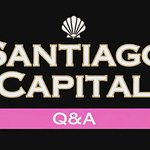Executive Summary
“I shall proceed from the simple to the complex. But in war more than in any other subject we must begin by looking at the nature of the whole; for here more than elsewhere the part and the whole must always be thought of together.” - Carl von Clausewitz, On War
Clausewitz’s warning applies not only to war, but also to money. To understand either, one must study the whole, not just its fragments.
Money, like strategy, is an ecosystem of power. Every instrument, market, and institution serves a purpose within a larger design, and none can be truly understood in isolation. This is why money and power are inseparable. Each reinforces the other, and together they shape the hierarchy of nations.
In the pages that follow, we will examine several parts. The Eurodollar market, SWIFT, the Genius Act, and the rise of stablecoins. But they must always be considered as expressions of a single whole. Each component represents one mechanism through which the United States projects, maintains, or adapts its influence.
The details matter, but the structure matters more. Because what is emerging is not just a new currency system, but a new form of control.
Make no mistake, something profound is shifting in the geometry of global money. Quiet code and public ledgers are no longer just symbols of rebellion against the state; they are becoming extensions of it. And the very tools once imagined to escape central authority are now being absorbed by the most powerful monetary authority the world has ever known.
Through digital tokens that settle in real time and travel across borders without friction, the United States may be transforming the architecture of control itself.
The story of the past century has been one of tension between state power and free market choice. The Eurodollar system demonstrated that private markets could create money beyond the reach of national regulators. Bitcoin showed that software alone could issue and verify value without a sovereign.
Stablecoins fuse these two forces into something new. They combine the borderless utility of private innovation with the institutional weight of a global hegemon that can defend and enforce its currency anywhere on earth.
For decades, the world’s financial bloodstream has flowed through SWIFT, a European system that the United States has learned to influence but never fully control. Stablecoins represent the next stage of that evolution, a new set of rails through which the dollar can move not just by encouragement or partnership, but by systematic design.
This evolution has the potential to fundamentally alter the architecture of the entire global monetary system.
It means the United States will not only be the disrupted actor in this revolution; it will also be its own disruptor.
The same digital technologies once thought to threaten its dominance have instead become vehicles for its expansion. The dollar is no longer confined to banks or balance sheets. It now moves freely through networks that exist beyond the traditional financial system. It now exists in programmable form, able to move through networks the state can monitor, influence, and when necessary command.
What is emerging is not a decentralized alternative to the global order, but a deeper centralization disguised as freedom. Stablecoins promise efficiency, access, and inclusion, but each new token quietly reinforces the reach of the dollar and the power of those who issue it.
This frontier of monetary technology has also become the frontier of geopolitical leverage.
We believe the emergence of a USD stablecoin carries the potential to be a transformative event in monetary history, one as consequential as the day the United States severed its link to gold and as powerful in shaping the world’s financial order as the moment it abandoned Bretton Woods.
This paper does not offer reassurance of the status quo. It confronts a reality that few seem to have yet recognized and even fewer truly understand. It describes the quiet emergence of a tool whose strategic potential remains largely unseen, even as it begins to reshape the foundations of global finance.
What happens when the private innovation that once sought to liberate markets instead becomes the instrument through which a superpower consolidates them?
What if the next great disruption does not weaken the empire, but strengthens it?
Read on to explore how a digital currency backed by the United States could become the most sophisticated weapon of influence ever created.











